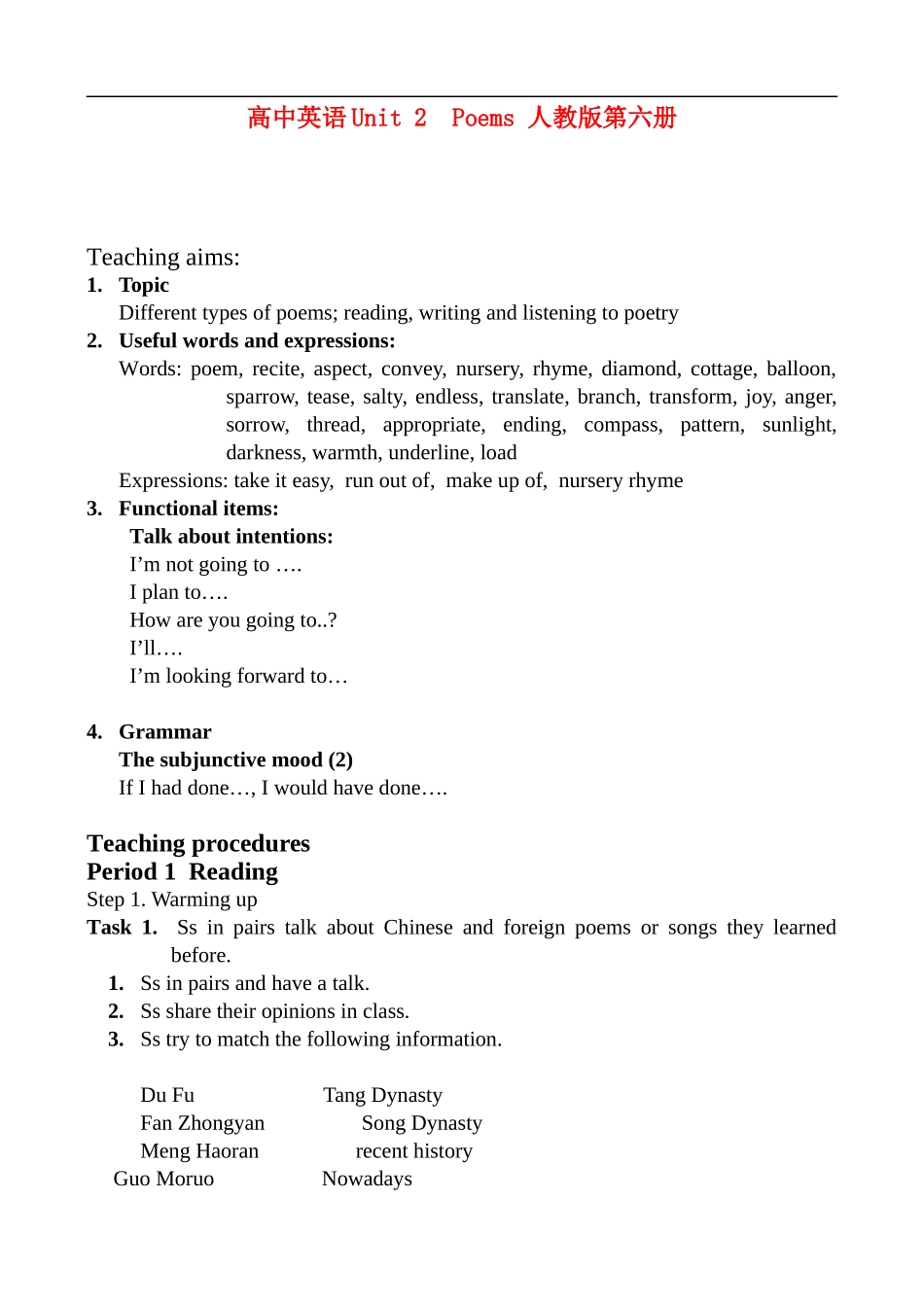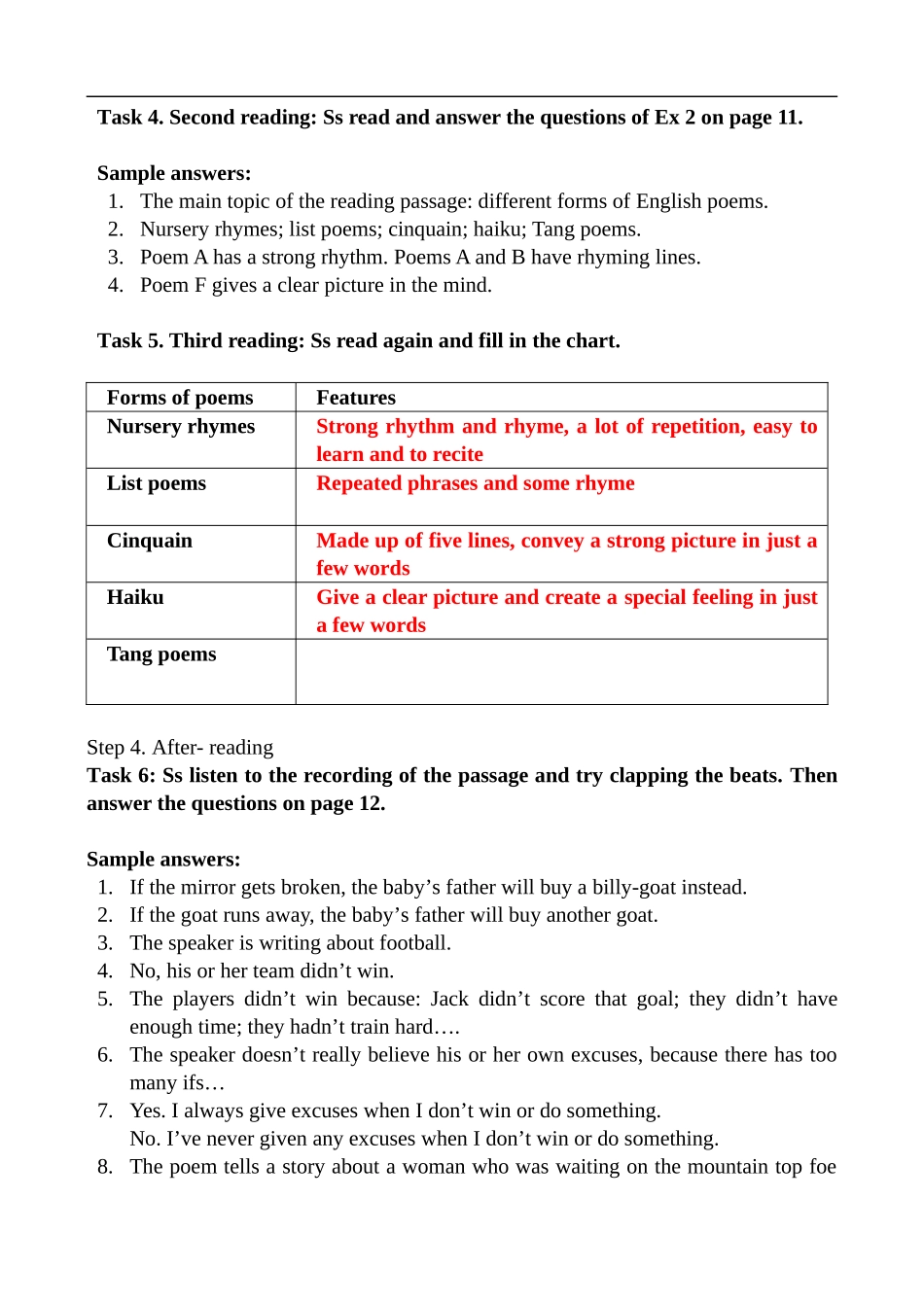高中英语 Unit 2 Poems 人教版第六册Teaching aims:1. Topic Different types of poems; reading, writing and listening to poetry2. Useful words and expressions:Words: poem, recite, aspect, convey, nursery, rhyme, diamond, cottage, balloon, sparrow, tease, salty, endless, translate, branch, transform, joy, anger, sorrow, thread, appropriate, ending, compass, pattern, sunlight, darkness, warmth, underline, loadExpressions: take it easy, run out of, make up of, nursery rhyme3. Functional items:Talk about intentions:I’m not going to ….I plan to….How are you going to..?I’ll….I’m looking forward to…4. Grammar The subjunctive mood (2)If I had done…, I would have done….Teaching proceduresPeriod 1 ReadingStep 1. Warming upTask 1. Ss in pairs talk about Chinese and foreign poems or songs they learned before. 1. Ss in pairs and have a talk.2. Ss share their opinions in class.3. Ss try to match the following information.Du Fu Tang Dynasty Fan Zhongyan Song DynastyMeng Haoran recent history Guo Moruo Nowadays Mao Zedong Tang Dynasty Byron America Shelly England Emerson England Tagore Germany Goethe India Step 2. Pre-reading Task 2. Ss discuss and answer the following questions.1. Why do people write poems?Sample answers: to express one’s hopes and intentions; to call up people to do something; to practice writing; to pour out one’s feelings; to show dissatisfaction or praise…2. People from different countries write different kinds of poems. Do you have a favourite poem in Chinese? Why is it your favourite poem? Do you have a favourite poem in English? Why is it your favourite poem?Step 3. ReadingTask 3: First reading: Ss skim the poems and fill in the following form.Which poem ABCDEFGHDescribes a person?√Tells a ...


